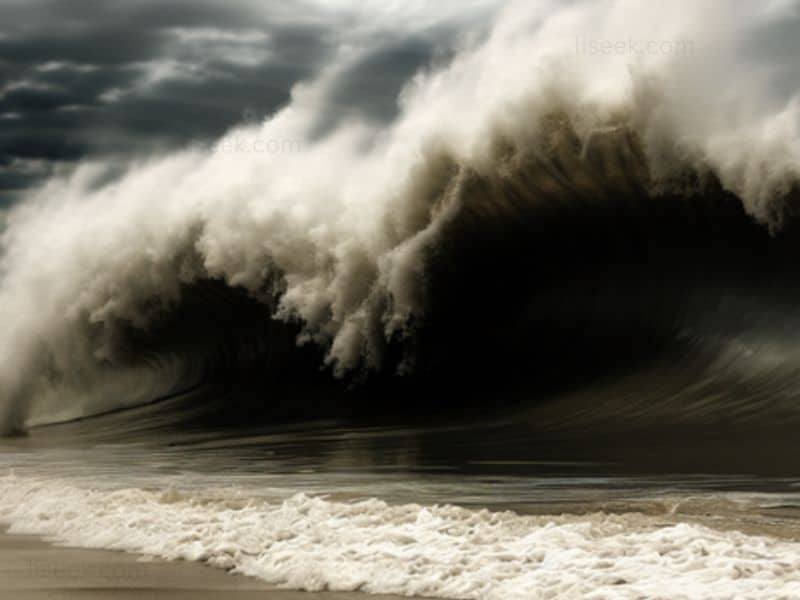Uncovering the Tsunami Possibility on Long Island
Today, I’m diving into the rather curious topic of a tsunami hitting Long Island. I know it sounds like a storyline straight from a disaster movie, but let’s unravel the scientific aspects that might influence such an occurrence.
The Geological Context
To grasp the likelihood of a tsunami affecting Long Island, one needs to first understand the tectonic circumstances of the area. Long Island is situated off the eastern coast of the United States, a region not generally associated with the seismic activity that often spawns tsunamis. Unlike the Pacific Rim or the Mediterranean, which are tectonically active zones, the eastern coast of the United States is relatively stable.
Nevertheless, stability does not equate to immunity. For example, let’s take the Lisbon earthquake of 1755 that created a massive tsunami. Even though Portugal lies outside a tectonic plate boundary, the devastating event still happened.
Potential Tsunami Sources
Now, moving our focus back to the waters near Long Island, it’s essential to look at possible sources of tsunamis. One significant possibility is underwater landslides, which could potentially generate tsunamis. This is where the Hudson River comes into play. It has a canyon that extends far out into the Atlantic Ocean. A substantial landslide within this undersea canyon could indeed trigger a tsunami.
Another factor is distant earthquakes. A powerful earthquake along the Puerto Rico Trench, for example, could potentially generate a tsunami that could reach Long Island. And there’s always the chance of a rogue asteroid plunging into the Atlantic. Still, it’s important to note that these are relatively low-probability events.
Historical Incidences
Historically speaking, there have been tsunamis that impacted the east coast of the U.S., albeit not specifically Long Island. The most notable was the transatlantic tsunami triggered by the aforementioned 1755 Lisbon earthquake. This tsunami caused destruction along the east coast and the Caribbean.
In the 20th century, the Grand Banks Tsunami of 1929, resulting from an undersea landslide off the coast of Newfoundland, sent waves down the coast. There were also several minor tsunamis triggered by smaller undersea landslides and distant earthquakes.
Preparedness Matters
While the risk of a tsunami hitting Long Island is not high, it’s not zero either. As such, it’s crucial for the residents to be informed and prepared for such an event. Emergency management professionals recommend staying updated about evacuation routes, and emergency alerts, and maintaining a disaster supply kit.
In the end, understanding our environment, its potential risks, and our preparation can make a difference in any situation – even an unlikely tsunami in Long Island.
The Science Behind Tsunamis
Let’s step back a moment to delve into the science behind tsunamis. A tsunami is a series of ocean waves generated by sudden disruptions in the sea floor, landslides, or volcanic activity. They can cause enormous destruction when they hit coastlines, but it’s important to remember that not all seismic activity results in tsunamis.
The magnitude of the initial disturbance, its depth beneath the sea floor, the water’s depth at the disturbance location, and the configuration of the coastline are all contributing factors that determine the size and impact of a tsunami. Therefore, it’s not enough just to have an earthquake or a landslide; the conditions have to be just right for a tsunami to form.
The Role of the Atlantic Ocean
Considering that Long Island is nestled within the Atlantic Ocean, it’s essential to talk about how the Atlantic behaves concerning tsunamis. The Atlantic Ocean is not as tsunami-prone as the Pacific, which has the notorious ‘Ring of Fire’ and significant tectonic plate boundaries. However, the Atlantic is not entirely quiet either. The Puerto Rico Trench, for instance, poses a significant threat due to its tectonic activity.
What makes the Atlantic somewhat protective for Long Island is its vast expanse. Tsunamis lose energy as they travel, so a tsunami originating far away would likely be less destructive upon reaching Long Island. However, as we’ve discussed before, an undersea landslide in the nearby Hudson Canyon or a massive earthquake in the Puerto Rico Trench could still pose a threat.
Observing the Patterns
In an effort to predict and prepare for such events, scientists are closely monitoring seismic activities and studying historical patterns. Advanced technology, like tsunami detection buoys, aids in providing early warnings to coastal areas. This level of preparedness helps save lives by giving people more time to evacuate and reach higher ground.
As we’ve learned from places like Japan and Indonesia, no matter how infrequent or unlikely tsunamis may seem, they can be incredibly devastating when they do occur. Therefore, it’s of paramount importance that we understand our risks, no matter how small they might seem.
The 2011 East Coast Earthquake – An Eye-Opener
On August 23, 2011, a magnitude 5.8 earthquake occurred near Mineral, Virginia. Its epicenter was in the Central Virginia Seismic Zone, which, although not as active as regions near tectonic plate boundaries, has experienced small to medium quakes over the years. This quake was the most powerful to hit the East Coast in over six decades.
What made this earthquake particularly eye-opening was how far its effects reached. The tremors were felt as far north as Ontario, Canada, and as far south as Atlanta, Georgia. Buildings swayed in Manhattan, and residents of Long Island felt the shaking. No major damage occurred on Long Island, but it was a stark reminder that the East Coast isn’t immune to seismic activity.
Although this earthquake did not trigger a tsunami, its widespread impact underscored the need for readiness even in areas that aren’t typically considered earthquake or tsunami hotspots. It served as a reminder to scientists and disaster preparedness officials that they should consider a wide range of scenarios while making disaster mitigation plans.
It’s also worth mentioning that while the 2011 Virginia earthquake was felt over a large area, the energy released was not sufficient to displace a significant amount of water in the ocean or cause an undersea landslide, both of which are necessary to generate a tsunami.
While this event highlighted the reality of seismic risks on the East Coast, the conditions for a tsunami still weren’t met. This underlines the complex interplay of factors needed for a tsunami to form, reiterating that while a tsunami hitting Long Island remains within the realm of possibility, it’s a low-probability event given the current geological understanding.
Final Thoughts on Tsunamis and Long Island
We’ve journeyed through a vast ocean of information exploring the prospect of a tsunami impacting Long Island. Along the way, we’ve delved into the geological conditions, historical incidents, potential sources, and have learned about the science behind tsunamis.
While the possibility of a tsunami hitting Long Island is not high, the lessons from the 2011 Virginia earthquake highlight the importance of considering even low-probability events in our disaster preparedness efforts. The Atlantic Ocean, with its sheer breadth and lesser seismic activity compared to other regions, offers a measure of protection to Long Island, but as we’ve seen, it does not render it completely immune.
Residents of Long Island and the larger East Coast should maintain a level of awareness about tsunamis, much like they would for hurricanes or other natural disasters. Preparedness strategies, such as understanding evacuation routes and maintaining a disaster supply kit, can make all the difference when faced with an unlikely, yet not impossible, event like a tsunami.
So, to answer the burning question – Can Long Island get a tsunami? Yes, it’s possible. But is it likely? Not particularly, given our current understanding of the region’s geology and the Atlantic Ocean’s characteristics. However, understanding the potential risk and preparing for such an eventuality is a beneficial approach for those of us dwelling on the coast.
© 2022-2023 by LiVentures. All rights reserved. No part of this document may be reproduced or transmitted in any form or by any means, electronic, mechanical, photocopying, recording, or otherwise, without prior written permission of LiVentures.



Leave a Reply
You must be logged in to post a comment.